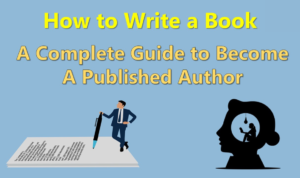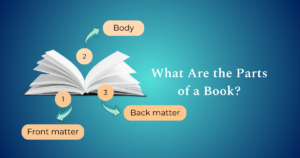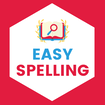Introduction
And so you have written an amazing book idea that is waiting to be published at a publisher. Before any publisher sees your work, you have to develop a book proposal that catches their attention. Think of it as a publication pitch-an enticing document that would convince agents and publishers as to why your book should have a place in the market.
Through this article, you will find out everything you ever needed to know about book proposals: their structure, their contents, and, most importantly, how to make them stand out. Additionally, whether you’re an aspiring writer or an experienced author, this article will ensure that you too will become a master in creating a perfect literary proposal.
What is a Book Proposal?
In a nutshell, a book proposal is a business document that outlines your ideas for the book, the audience you intend to reach, and the plans you have made for marketing it. Much unlike an entire manuscript, a proposal helps publishers decide whether or not to invest in a book based on its marketability. It is your pitch to them for getting it published and therefore assures the decision-makers about the worthiness of its publishing.
Why Do You Need a Book Proposal?
- Helps you secure a book deal without writing the entire manuscript.
- Grabs the attention of agents and publishers with a compelling pitch.
- Demonstrates your professionalism and understanding of the publishing industry.
- Saves time by allowing you to test your book’s marketability early.
- Refines your book idea, ensuring a clear and focused vision.
Key Elements of a Strong Book Proposal
A Book Proposal is an excellent proposition for a book that has to attract the attention of publishers and convince them to seal the book deal. This does not serve only as a business plan, but also serves a pitch as to why it is worthwhile publishing your book. Each section has been broken down in detail below.
Title Page
A title page should be pristine and sharp as that will be the first thing a publisher sees on a manuscript. It contains the title of the book and subtitle, if any, followed in authorship by the full name as it was put into the contact address: phone number and email. Also indicated is the submission date.
Overview
- Capture your book’s core idea in a compelling and concise summary that highlights its significance and appeal.
- Explain why your book is relevant now and how it addresses a specific need or gap in the market.
- Emphasize what makes your book unique, offering a fresh perspective or valuable insights that set it apart.
Target Audience
When publishers define the target audience, they are determining the book’s market potential. Be specific in terms of age group and other demographic details. Explain their tastes, reading habits, and factors that will make your book appealing to them.
Competitive Analysis
- List similar books and compare them.
- Show how yours is unique.
- Use a table for clarity.
- Highlight deeper insights.
- Prove market potential.
Marketing Plan
A Book Proposal for publishing an excellent book does not just end there; rather, it involves convincing the publishers on how you will also get the book promoted.Outline marketing efforts like your online presence—how much traffic does your personal website, blog, or social media sites pull? Additionally, discuss plans for book tours, perhaps podcast interviews, or public speaking events.
Author Bio
- Showcase your qualifications.
- Mention writing credentials.
- Highlight relevant expertise.
- Emphasize unique experiences.
- Prove credibility and passion.
Book Synopsis
Summarize the book’s core message and what readers will gain from it. Make this section engaging and informative, capturing the essence of your book in a way that excites the publisher.
Chapter Outline

A clear-cut Chapter outline would give a structured view of the content of the book from that point onward to the publishers. List each chapter title and describe briefly what it covers; this is for the publisher to visualize the flow of the book and ensure that it is organized logically. For example, if your book includes case studies, research, or storytelling elements, you can include them here as well. A convincing elaborated structure gives weight to the proposal.
Sample Chapters
- Provide one or two chapters.
- Show your writing style.
- Engage the reader effectively.
- Pick compelling or informative sections.
- Highlight expertise and clarity.
How to Make Your Book Proposal Stand Out
- Keep it clear and concise.
- Use visuals like headers and tables.
- Highlight market potential.
- Showcase how it fills a gap.
- Let your unique voice shine.
Common Mistakes to Avoid
A Book Proposal is powerful, but a proposal that’s poorly articulated and unprepared may end up rejected. Avoid generality—publishers want details about your book. Recognizing competition is important; every title involves competitors, and yours must show its unique standpoint. Don’t forget the marketing plan, as publishers want authors who get the word out. Moreover, have fun keeping your proposal short—clunky manuscripts lose interest fast.
Conclusion
A good book proposal is vital for having a book published. An organized, interesting, and professional pitch not just boosts your chances of getting published but makes it more attractive to publishers. Take your precious time, follow this guide, and ensure that your submission stands out from the competition. Show your passion; convey the unique benefit of your book; and prove its market potential to publishers.
FAQs
Can I submit a book proposal without an agent?
Yes, but having an agent increases your chances of getting noticed by traditional publishers.
How long should a book proposal be?
Most proposals range from 10 to 50 pages, depending on the book type and publisher requirements.
Do fiction and non-fiction books require different proposals?
Yes. In contrast, fiction proposals focus more on storytelling, while non-fiction proposals emphasize market demand and expertise.
Can I send my proposal to multiple publishers at once?
Yes, but check their guidelines—some publishers prefer exclusive submissions.
How long does it take for a publisher to respond?
It varies, but expect to wait a few weeks to several months for a response.








